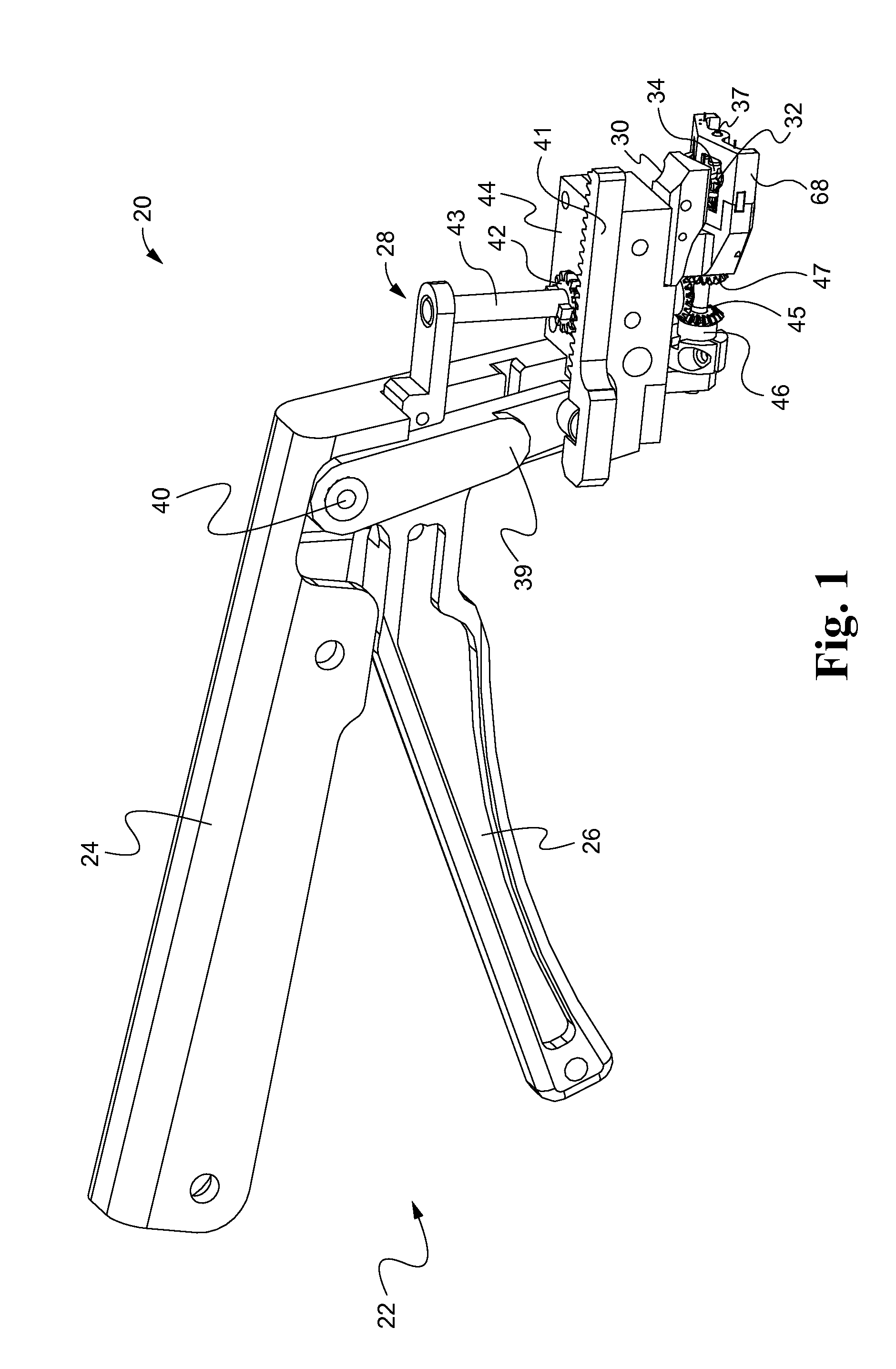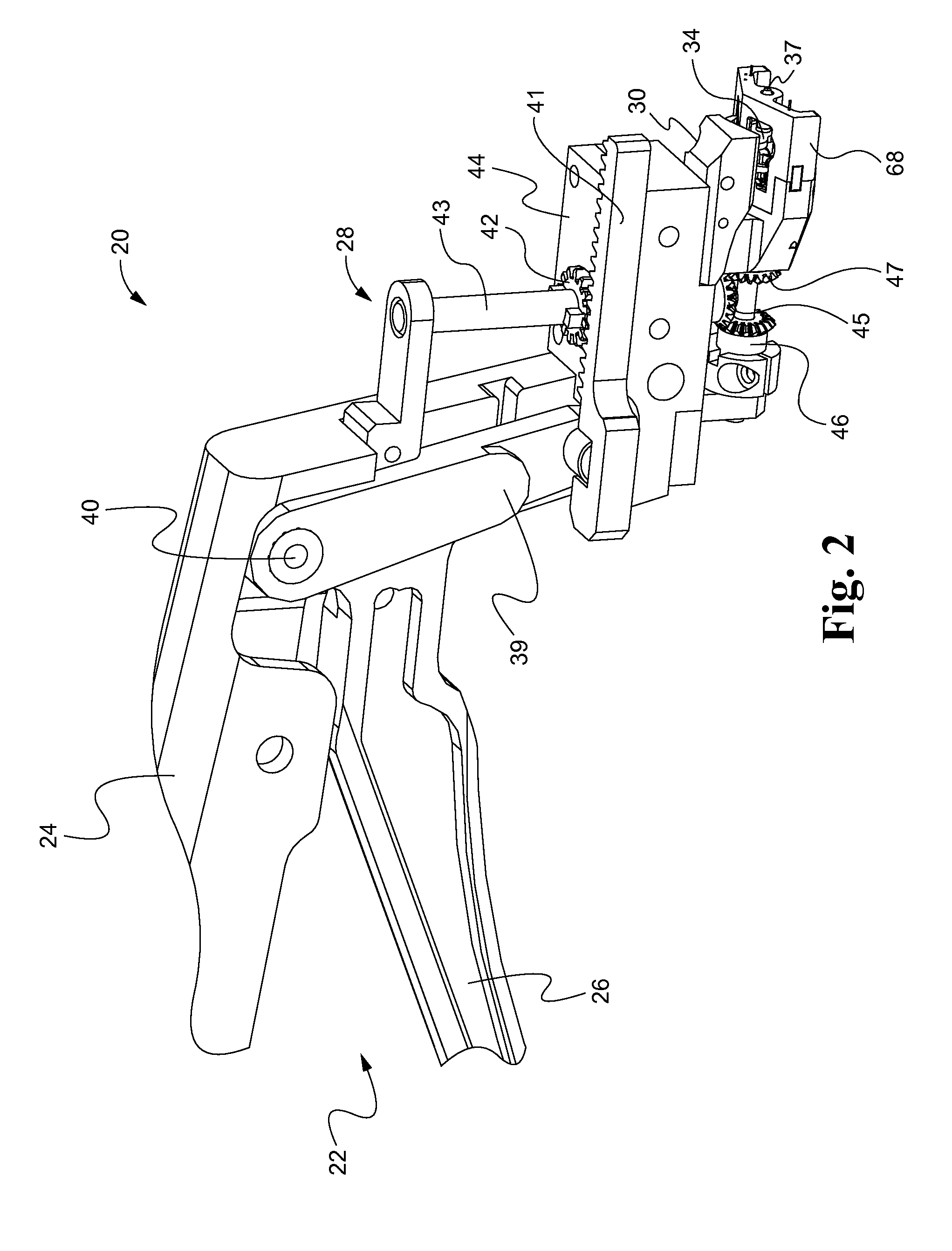Skin Suturing Device Using Rotating Needles
a technology of rotating needles and sutures, applied in the field of medical devices, can solve the problems of time-consuming, time-consuming, and the surgeon's time-consuming to close, and achieve the effect of saving time and money
- Summary
- Abstract
- Description
- Claims
- Application Information
AI Technical Summary
Benefits of technology
Problems solved by technology
Method used
Image
Examples
Embodiment Construction
[0049]Referring now to the drawings, and with specific reference to FIG. 1, a suturing device constructed in accordance with the teachings of the present disclosure is generally referred to by reference numeral 20. The device, as will be described in further detail herein, is advantageous for surgically closing incisions, not only quickly, but with closely approximated edges and minimal scarring. Of course, the suturing device 20 can also be used to close lacerations from traumatic events such as accidents, or the like. The first embodiment of FIGS. 1-9 of the suturing tool 20 is designed to be placed under the skin sections of the skin to be sutured, and then place a suture into the dermal layers of the skin. In later described embodiments, suturing tools are described to be used against the epidermal layer of the skin, from the outer skin surface, or be used laparoscopically. Although the embodiments disclosed herein demonstrate suturing as applied to skin, it will be understood t...
PUM
 Login to View More
Login to View More Abstract
Description
Claims
Application Information
 Login to View More
Login to View More - R&D
- Intellectual Property
- Life Sciences
- Materials
- Tech Scout
- Unparalleled Data Quality
- Higher Quality Content
- 60% Fewer Hallucinations
Browse by: Latest US Patents, China's latest patents, Technical Efficacy Thesaurus, Application Domain, Technology Topic, Popular Technical Reports.
© 2025 PatSnap. All rights reserved.Legal|Privacy policy|Modern Slavery Act Transparency Statement|Sitemap|About US| Contact US: help@patsnap.com



